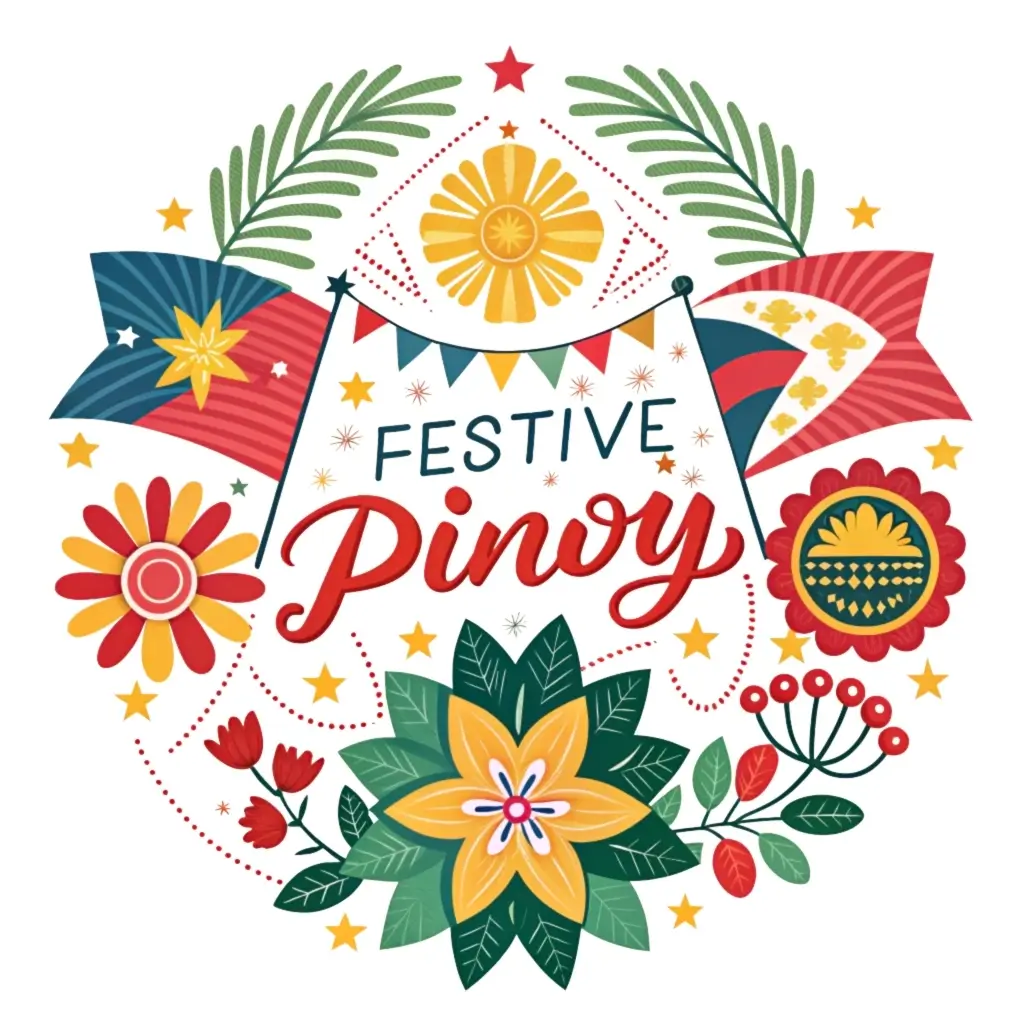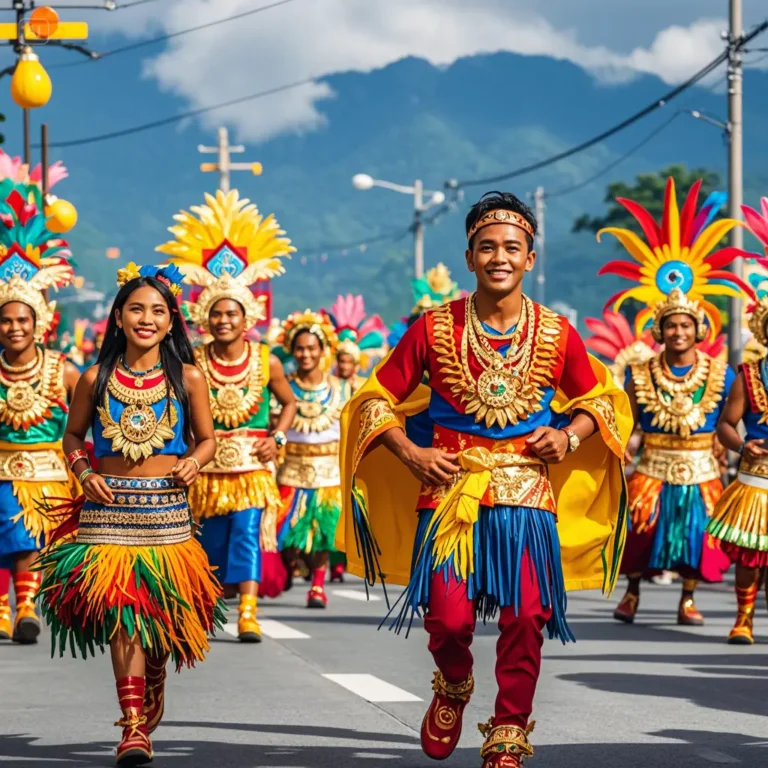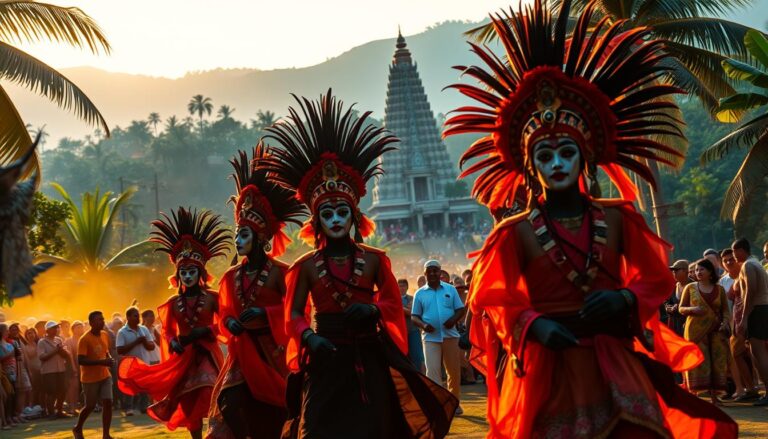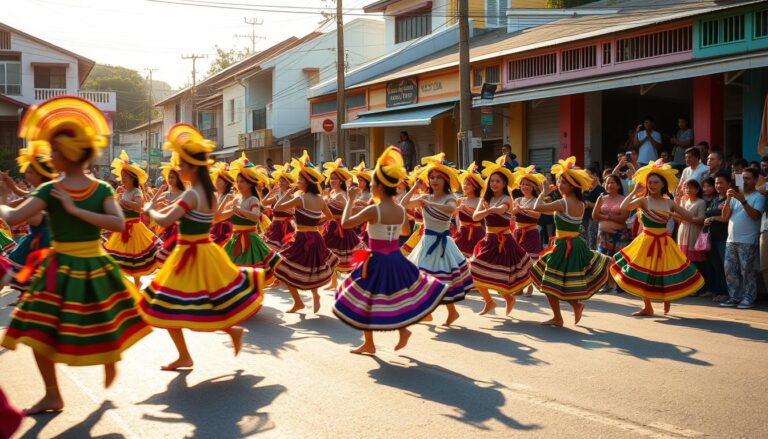Sarok Festival: Cebu’s Sarok Festival: Everything You Need to Know
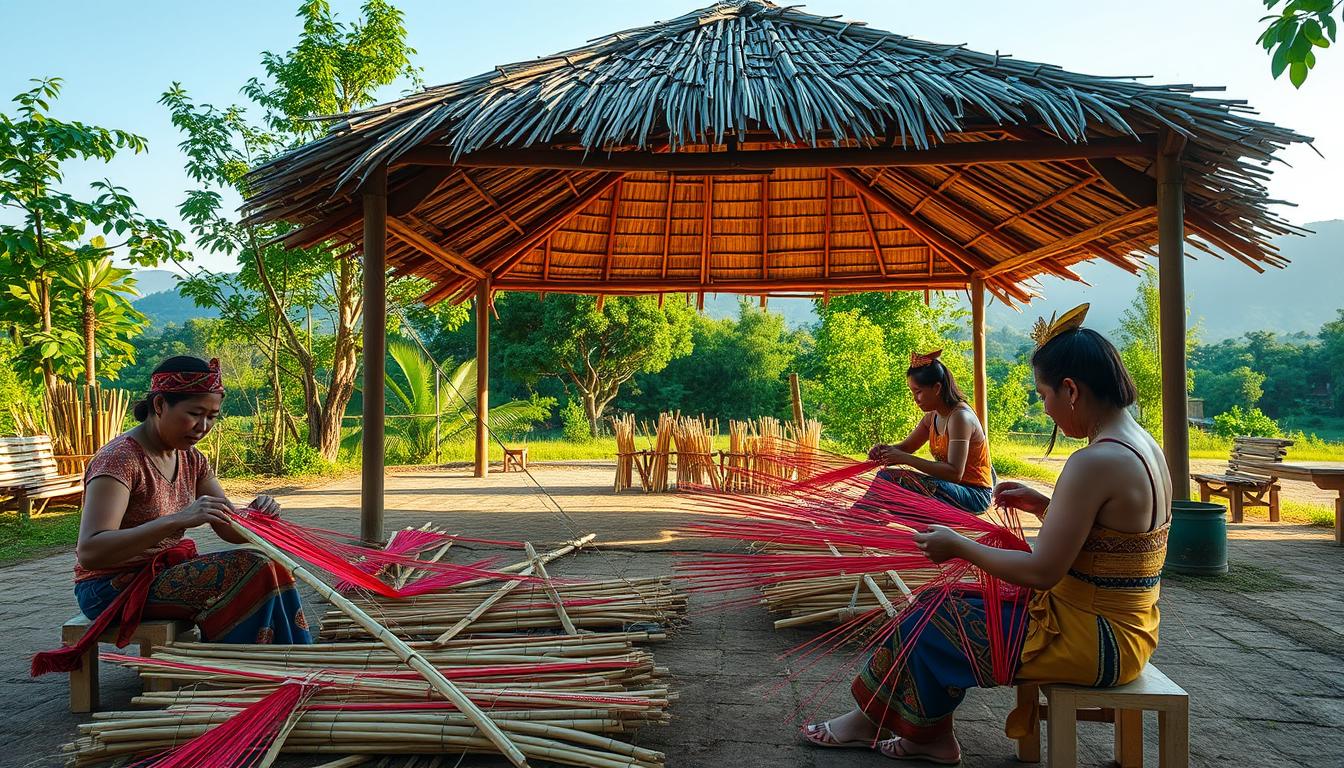
Every February, the town of Consolacion comes alive with a colorful tribute to its heritage. This annual event marks the municipality’s founding anniversary, blending agricultural traditions with lively performances. Recognized as a special holiday since 2019, the festivity draws visitors from across the Philippines and beyond.
Located just 20km from Cebu City, the celebration showcases handcrafted items made from bamboo strips and dried banana leaves. These materials reflect the area’s rich craftsmanship, particularly in the village of Tulotulo where weaving became a thriving industry. The event also features dances, parades, and trade fairs that highlight local culture.
Key Takeaways
- Held every February 14 in Consolacion
- Commemorates the town’s founding with cultural performances
- Features crafts made from natural materials like bamboo
- Easily accessible from Cebu City via bus routes
- Recognized as an official non-working holiday
The Origins and History of Sarok Festival: Cebu’s Sarok Festival
Deep in Consolacion’s history lies the story of a practical hat made for farmers that became a cultural icon. This humble accessory, woven from bamboo strips and dried banana leaves, reflects generations of craftsmanship and resilience.
Etymology: The Meaning Behind the “Sarok” Hat
The term “sarok” refers to the wide-brimmed hat traditionally worn by rice farmers. Its design uses 2–3 layers of bamboo strips, waterproofed with dried banana leaves, offering shade and rain protection.
From Post-War Craft to Festival: A Timeline
- 1920: Consolacion founded under Governor Harrison’s executive order.
- Post-WWII: Weaving emerged as a cottage industry in Tulotulo village.
- 1996: Councilor Avelino Gungob launched the event via municipal resolution.
- 2008: Date shifted to October to align with San Narciso feast.
Consolacion’s Founding and the Festival’s Evolution
In 2018, historians confirmed the town’s true founding date as February 6, 1920. The celebration initially honored this milestone but later adapted to highlight local crafts. Today, the hat made by artisans symbolizes both heritage and economic pride.
Cultural Significance of the Sarok Festival
Generations of craftsmanship shine through every carefully woven piece. These items represent more than just practical tools—they embody community identity and resilience. The celebration honors both the artisans and the farmers who inspired the designs.
Celebrating Farmers and Traditional Handicrafts
Originally designed for field work, the wide-brimmed hats protected farmers from sun and rain. Made with bamboo frames and banana leaves, they showcase sustainable material use. Today, they symbolize agricultural heritage across generations.
Local women lead production through weaving cooperatives. What began as household craft now supports entire families. Prices have grown from mere centavos to fair wages, reflecting the value of traditional handicrafts.
Miligoy de Cebu: The Dance That Unites the Community
The Miligoy Cebu performance turns bamboo into music. Dancers use castanets made from the same materials as the hats. This dance traditionally marked weddings and christenings before becoming a festival highlight.
Pairs move to rhythmic clicks, telling stories through choreography. The Miligoy Cebu dance preserves oral history while entertaining crowds. Workshops now teach younger generations these steps, ensuring cultural continuity.
At the 2011 Cebu Expo, artisans demonstrated hat-making to international visitors. Such events showcase how functional items became artistic ambassadors. Every stitch carries centuries of knowledge forward.
What to Expect at the Sarok Festival
Visitors are greeted by a whirlwind of music, dance, and craftsmanship. The event blends tradition with modern flair, offering something for every age group. From artisan showcases to interactive performances, the schedule never disappoints.
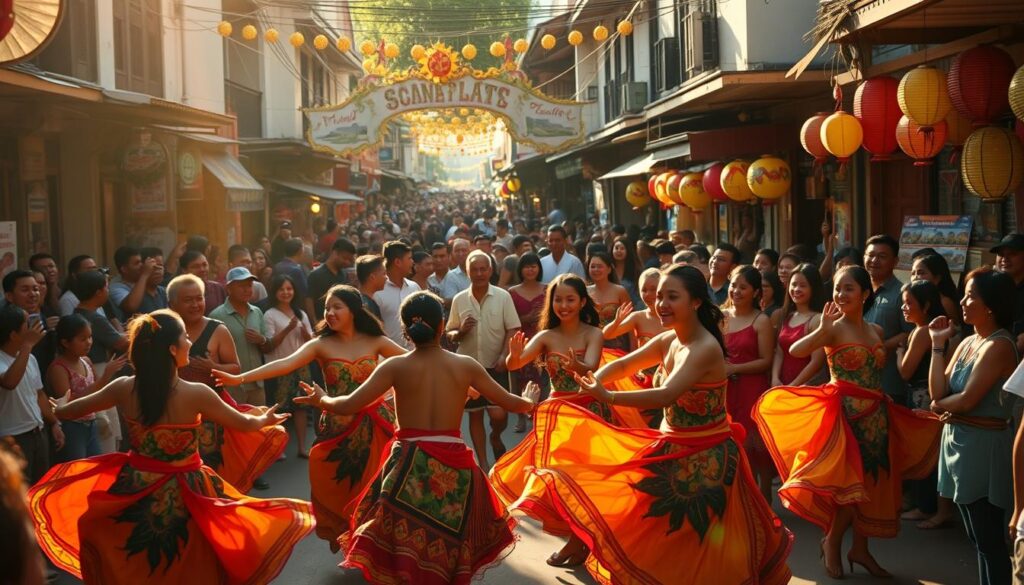
Parades and Performances
The grand parade dazzles with floats adorned in bamboo and banana leaf designs. Troupes in colorful costumes perform the Miligoy de Cebu dance, their bamboo castanets clicking in sync. Crowds line the streets, cheering as performers weave through town.
Competitions for All Ages
Artisan competitions highlight weaving skills, from hat-making to decorative crafts. The children’s elementary division showcases young talent, while the Festival Queen contest judges grace and cultural knowledge. Winners often demonstrate flawless sarok handling and dance proficiency.
- Street dancing troupes wear body paint and sarok-inspired attire.
- Trade fairs sell local goods, including handwoven items.
- Audiences join in with remixed folk tunes.
Pro tip: Bring a cap or umbrella—the open-air venues offer little shade. Despite weather challenges, the show always goes on, thanks to the organizers’ adaptability.
Conclusion
What began as a farmer’s tool has become a vibrant emblem of cultural heritage. The event preserves pre-colonial traditions, turning woven crafts into symbols of pride. For tourists, it’s a chance to take home handmade treasures and support local artisans.
Unlike typical Valentine’s Day events, this celebration offers a unique blend of history and community spirit. Every performance and craft tells a story of resilience and creativity.
Plan a trip to Consolacion and experience authentic culture in the Philippines. Discover how a simple hat weaves together past and present.
